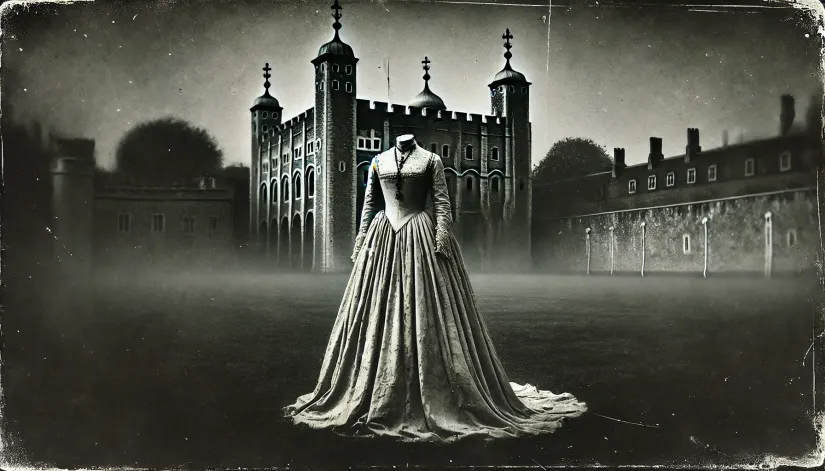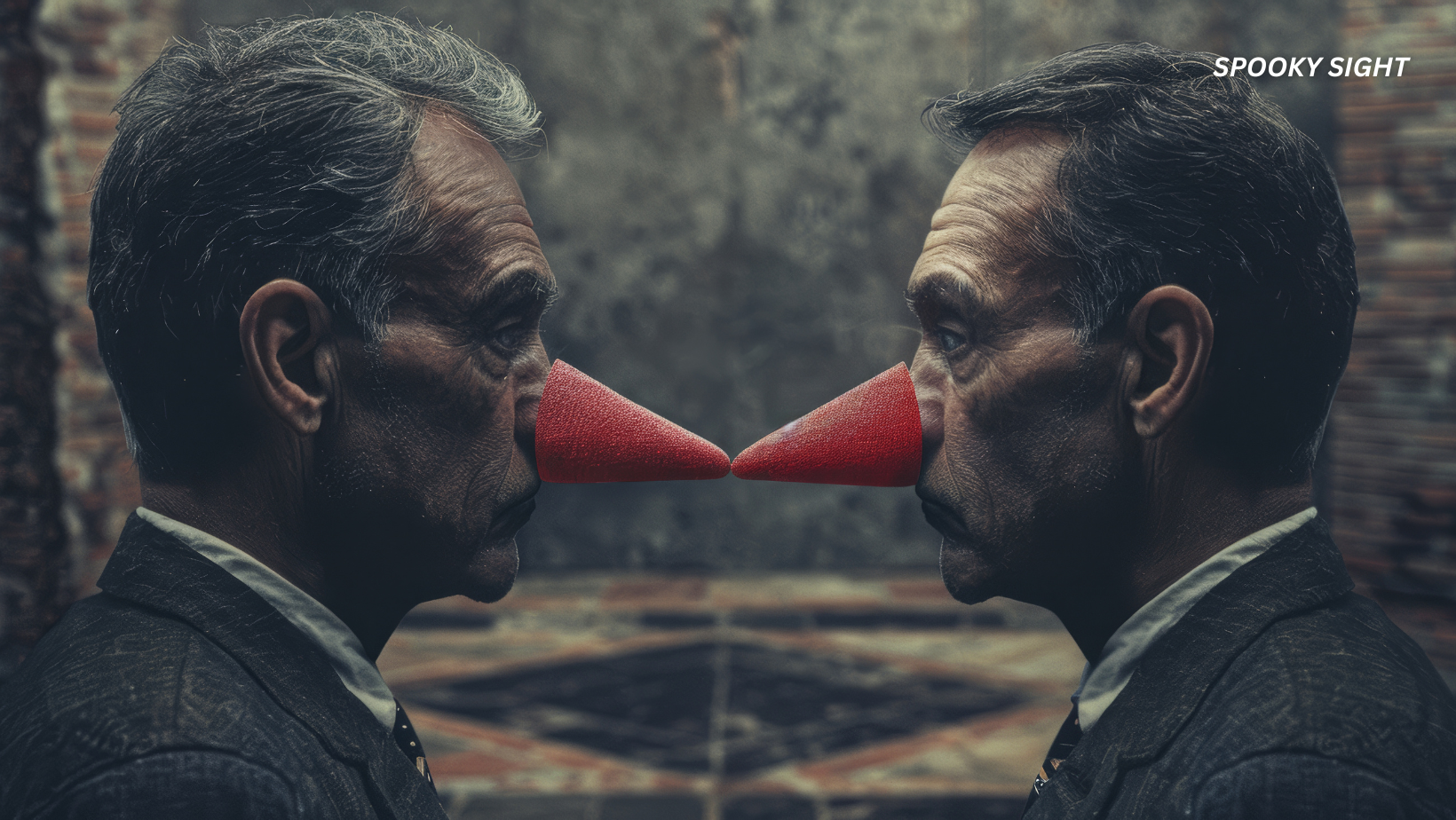Some stories stick with us—stories of power, betrayal, love, and loss. Anne Boleyn’s is one of them.
She was the woman for whom King Henry VIII moved Heaven and Earth, reforming the very fabric of English society just to make her his queen. But her story didn’t end there—it ended at the scaffold. Or did it?
Many think that the queen’s spirit never really left us. If the tales are true, Anne Boleyn’s ghost still wanders among us, reminding the world of what she gained and how quickly it was taken away.
Some claim that even Princess Diana felt Anne’s presence. How much of that is true? What did Diana see? Why does Anne Boleyn’s ghost seem to linger?
I’ll try to answer all these questions (and more) in the article below.
In this article:
Who Was Anne Boleyn?
Born sometime around 1501 (or 1507), Anne Boleyn was the daughter of Thomas Boleyn, a savvy diplomat, and Elizabeth Howard, whose lineage was pretty noble too.
Her father wasn’t just well-connected—he served under both Henry VII and Henry VIII, which meant Anne got to experience life in some of Europe’s most influential courts. And let me tell you, her early life was all about privilege, learning, and ambition. This very ambition would eventually fuel the infamous “Anne Boleyn ghost” legend.
Early Life
Anne spent much of her early years in the Netherlands and France, learning music, dance, etiquette, and even about different religions (which was rare then).
Just imagine this: a young woman at the French court, serving as a lady-in-waiting to Queen Claude, getting the best education on how to navigate power and influence. It was there that Anne developed her signature wit and intelligence—qualities that would later prove irresistible to Henry VIII.
Related: Mackenzie Poltergeist: Is Greyfriars the World’s Most Haunted Graveyard?
When she returned to England around 1521, it didn’t take long for her charm, confidence, and bold personality to catch Henry’s eye. But let’s be real: Anne’s story always had this air of destiny—one of high hopes and devastating sorrow—which some say led to her restless ghost roaming even today.
Her powerful connections (including her uncle Thomas Howard, the Duke of Norfolk) put her at the very center of court politics. And in Henry VIII’s England, that was a dangerous place, where loyalty was fleeting, and ambitions were sky-high.
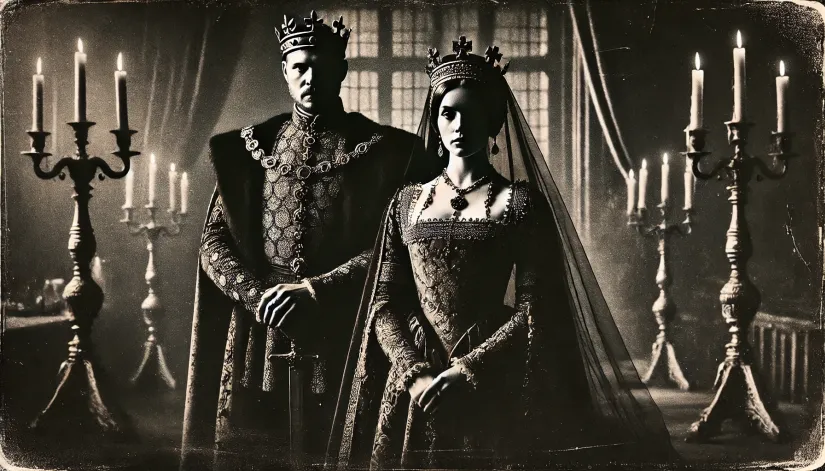
The Rise to Queenship
Anne wasn’t about to be just another mistress to Henry VIII. No way. Anne demanded more than many women in his orbit—she wanted to be queen. And that determination drove Henry wild with obsession.
Anne made it clear: it was marriage or nothing, which forced Henry to push for an annulment from Catherine of Aragon. But that turned out to be a massive undertaking. In fact, it led to one of the most significant events in British history—the break with the Catholic Church.
Henry, absolutely determined to have Anne, defied the Pope and formed the Church of England—just to marry her. By January 1533, Henry had his marriage to Catherine declared null and void, thanks to Archbishop Thomas Cranmer, and married Anne.
Related: Who is the Brown Lady of Raynham Hall Haunting Visitors?
By June, she was already crowned queen in a spectacular ceremony that marked her triumph and a turning point that fundamentally changed England.
But there’s a haunting irony here. Anne’s rise to power came with a price—and it was a steep one. It’s probably why her ghost still haunts her. The intense upheaval she caused was a gamble for love and power that ultimately ended in heartbreak.
The Struggle for a Male Heir
Once crowned, Anne had one primary duty: give Henry a male heir. And honestly, the pressure was crushing. In September 1533, she gave birth to a daughter, Elizabeth—the very same Elizabeth who would go on to be one of England’s greatest rulers.
But for Anne, it wasn’t enough. After that, she suffered several miscarriages, and that’s when things got even more complicated. Without a male heir, the tension in her marriage grew unbearable. Henry, desperate for a son, started questioning everything—including Anne.
By 1535, it was clear that Henry’s affections had shifted—and they were now focused on Jane Seymour, one of Anne’s own ladies-in-waiting.
In a way, Anne’s story shares eerie similarities with that of Queen Mary I, another tragic royal figure haunted by her inability to produce an heir. Mary, they say, also haunts the halls of Hampton Court. Her restless spirit still wanders those dark corridors in sorrow. It’s as if both women—bound by the weight of dynastic duty and the heartbreak of repeated loss—carry those emotions into eternity.
The same goes for Anne Boleyn’s ghost. She was allegedly spotted near places tied to her motherhood—Hever Castle (her childhood home) and Blickling Hall (where she was born).
Conflict with King Henry
Anne Boleyn wasn’t shy about voicing her beliefs. In the beginning, that’s what Henry adored about her—her fire, her spirit. But over time, it became her undoing.
Anne was a vocal supporter of religious reform and aligned herself with some of the more radical elements in court. She pushed for English Bibles to be distributed and supported reformist clergy like Hugh Latimer. But making powerful enemies is dangerous—especially when those enemies are as ruthless as Thomas Cromwell.
Cromwell, who had once been her ally, began to see Anne as a threat. She was outspoken, unpredictable, and had too much influence over Henry for his liking. And by 1536, Henry’s eyes were set firmly on Jane Seymour. Cromwell saw his chance and took it, allying himself with Anne’s enemies and fabricating evidence to bring her down.
The charges against Anne—adultery, incest, high treason—were scandalous. And most historians today agree they were complete nonsense. She was accused of affairs with multiple men, including her own brother, George Boleyn.
SpookySight recommends:
- Borley Rectory Ghosts: England’s Most Haunted House?
- Who Is the White Lady of Hohenzollern Castle?
- Fortune, Grief, and Ghosts: Sarah Winchester’s True Story
Betrayed by those she once trusted, she was brought to trial, with her uncle, the Duke of Norfolk, presiding over the proceedings. It was a sham—her fate had already been sealed by Henry’s desire to be rid of her.
Given what happened to her, it’s no wonder Anne Boleyn’s ghost may still haunt the cursed Tower of London.
And, since I mentioned Mary before, here’s another interesting fact that connects the two queens: Like Anne, Mary, Queen of Scots is also believed to haunt the site of her execution—Fotheringhay Castle.
Two women, both betrayed by the very people who promised them protection.
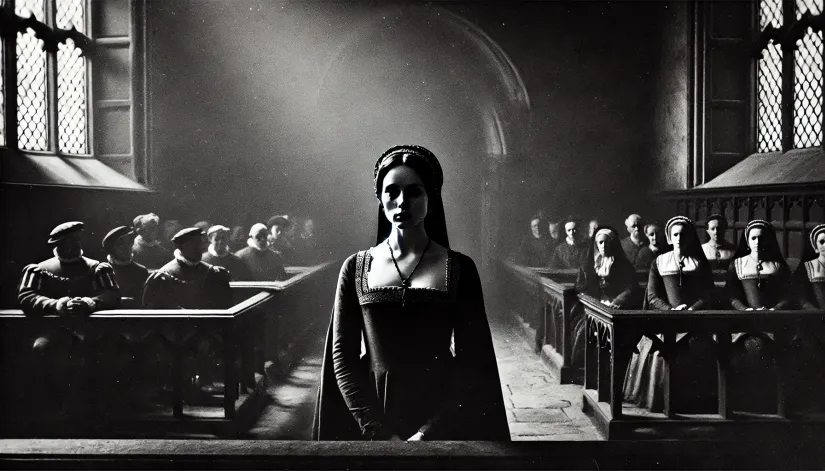
Trial and Execution
Anne’s trial was swift—held on May 15, 1536—and just four days later, she was led to her death on Tower Green. In a grim act of “courtesy,” Henry arranged for a skilled French swordsman to execute her rather than a traditional axe. It was meant to be quicker, more merciful—but let’s not pretend there was any real kindness in it.
Anne met her fate with dignity. She wore a simple grey gown, her dark hair tucked beneath a coif, and walked to the scaffold with remarkable grace.
Related: Do Residual Hauntings Fade Over Time? Why Some Ghosts Disappear
Witnesses said she was calm, even as she prayed for the king’s well-being in her final moments. Imagine that—praying for the man who had condemned her. It’s that image of Anne—calm, dignified, unbroken even in death—that sticks with people.
Today, the Tower of London guards whisper about a headless ghost drifting silently. Visitors also mention a pale apparition in white, gliding through the shadowy halls.
Where is Anne Boleyn’s Ghost?
Anne Boleyn’s ghost is reportedly seen at several locations across England, including Hever Castle, the Tower of London, Blickling Hall, Hampton Court Palace, Windsor Castle, and Salle Church.
If all these reports are accurate, then each haunting reflects a different part of her tragic life and legacy.
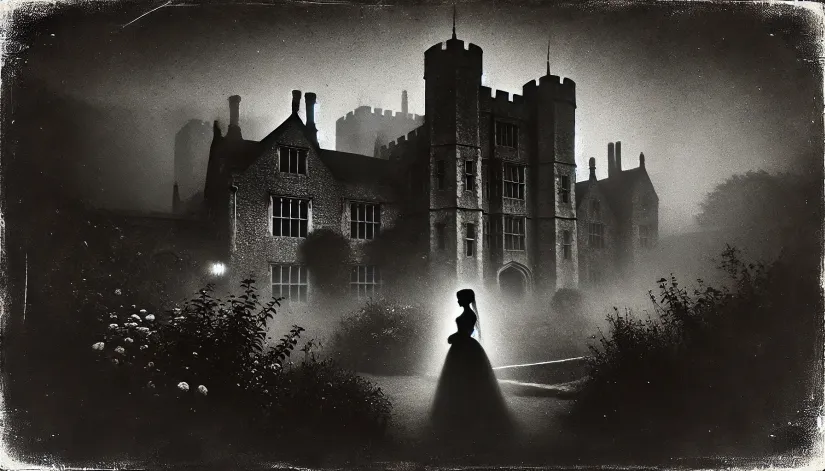
Hever Castle
Hever Castle, in Kent, was Anne’s childhood home. Initially built in the 13th century, Hever Castle came into the possession of the Boleyn family in 1462. Anne grew up within its fortified walls, surrounded by moats, stone halls, and expansive gardens.
According to local stories, Anne Boleyn’s ghost returns here each Christmas Eve, crossing the bridge over the River Eden. Many of those who had the chance to visit the Hever Castle during this time reported sightings of a mysterious female figure (believed to be Anne) strolling in the castle’s gardens or gazing from the windows.
Specifically, Anne Boley’s ghost has been observed near her former bedroom, as though she still lingers where she once dreamt of a royal future. The library, another favorite place of hers, also seems to hold her presence.
Tower of London
The Tower of London—the site of Anne’s darkest days, where she was incarcerated in 1536. However, unlike ordinary prisoners, she was held in the Queen’s House, a somewhat more comfortable prison section. But “comfort” did nothing to ease her isolation or the sense of impending doom. The weight of betrayal and political plotting must have been unbearable.
Today, her ghost is most commonly seen near the Chapel of St. Peter ad Vincula, where her remains were buried in an unmarked grave. During Victorian-era renovations, her body was identified and reinterred beneath a marble slab in the chapel.
You may also like:
- La Ciguapa: A Seductive Cryptid Luring Victims Into Darkness
- Kuchisake-onna: The Bloody Origins of Japan’s Most Feared Ghost
- The Smiling Man: A Terrifying Urban Legend from Seattle
Witnesses often report seeing her figure kneeling in prayer by the altar, almost as if still searching for the peace she was denied in life.
One of the most famous alleged sightings of Anne Boley’s ghost involves a guard in the late 19th century. He reported a headless ghost dressed in white walking near the Queen’s House. When he tried to confront it, the apparition disappeared suddenly.
Other sightings involve Anne standing at the window of her former room, staring out at Tower Green—the spot where she faced her death.
On Tower Green itself, she’s sometimes seen as a solemn, lone figure, retracing her last walk to the scaffold.
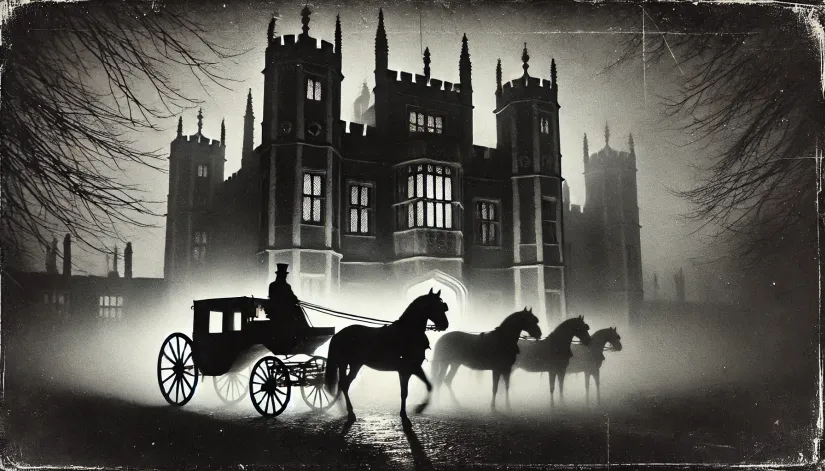
Blickling Hall
This estate had strong ties to the Boleyn family, who lived there before moving to Hever Castle. Although details of Anne’s birth are murky, the hall—now an imposing Jacobean mansion standing on the original site—has long claimed the connection.
Interestingly, the haunting here appears to be the most disturbing one.
Every year on May 19, the anniversary of her execution, a spectral carriage drawn by headless horses allegedly appears, with Anne inside, her severed head resting on her lap.
Locals recount how the carriage races up to the main entrance before vanishing into thin air. Witnesses have described an unnatural blue glow enveloping the horses and an eerie silence descending just before the apparition appears.
Hampton Court Palace
Hampton Court Palace—a place of ambition and joy during Anne’s time as queen. It was here that Anne celebrated her coronation festivities, hosted lavish events, and sought to secure her position by giving Henry a male heir.
Her connection with this place was deep. That’s probably why Anne Boleyn’s ghost reportedly still wanders the aptly named Haunted Gallery. The impressive gallery is linked to stories of Anne’s heated arguments with Henry over his growing attention to Jane Seymour.
Staff members have often seen her figure gliding sorrowfully through the gallery, her face pale, her eyes filled with loss. There’s an unmistakable rustle of a silk gown moving down the hallway, and people report a sudden rush of cold air.
Windsor Castle
Windsor Castle was one of Henry VIII’s favored residences, and it’s said that Anne’s spirit still haunts its halls.
During World War II, King George VI and his staff reportedly saw her ghost near the Dean’s Cloister in the early morning hours. She was dressed simply in white, moving slowly as if in contemplation.
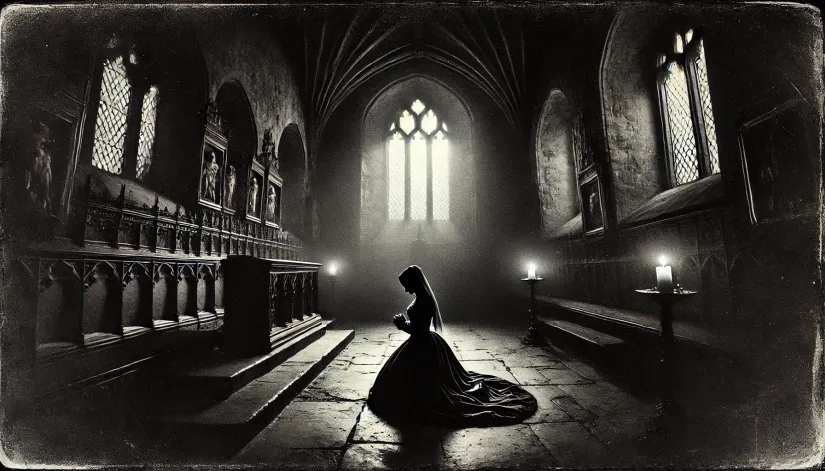
Salle Church
Salle Church, in Norfolk, is another site tied to Anne Boleyn’s ghost. However, the church also has links to the rest of the Boleyn family, as many ancestors were laid to rest there.
On the anniversary of her execution, witnesses have claimed to see a shadowy figure kneeling at the altar. Unlike the restless hauntings at the Tower or Hampton Court, Anne seems to find peace among her ancestors here at Salle Church.
Did Diana See the Ghost of Anne Boleyn?
Alright, let’s talk about this because it’s a pretty fascinating idea! There isn’t any verified historical evidence suggesting that Princess Diana actually saw Anne Boleyn’s ghost.
But—thanks to the 2021 film Spencer—this story gained a lot of traction.
The film portrays Diana as haunted by visions of Anne Boleyn, and honestly, it’s a brilliant metaphor. It draws such clear parallels between Diana’s struggles within the royal family and Anne’s tragic fate.
Think about it. Princess Diana, much like Anne, faced massive pressure and was constantly scrutinized—not just by the monarchy but by an unforgiving public eye.
Her turbulent marriage to Prince Charles, mixed with constant media attention and deep internal family conflicts, left her incredibly vulnerable. Diana often felt like an outsider, and that feeling echoes Anne Boleyn’s experience centuries earlier.
Both of these powerful women—despite their influence, despite their undeniable charm—found themselves isolated and ultimately betrayed by the very people closest to them.
During the 1990s, things were particularly brutal for Diana. Her painful estrangement from Charles and her battles with mental health issues were plastered all over the tabloids.
And it’s precisely during this challenging time that Spencer imagines Diana haunted by Anne Boleyn’s ghost, reflecting her fears of being cast aside by the royal establishment.
In fact, Diana likely feared a similar fate as Anne—maybe not literal execution, but definitely a kind of social death. She feared her reputation being shredded and her position erased.

